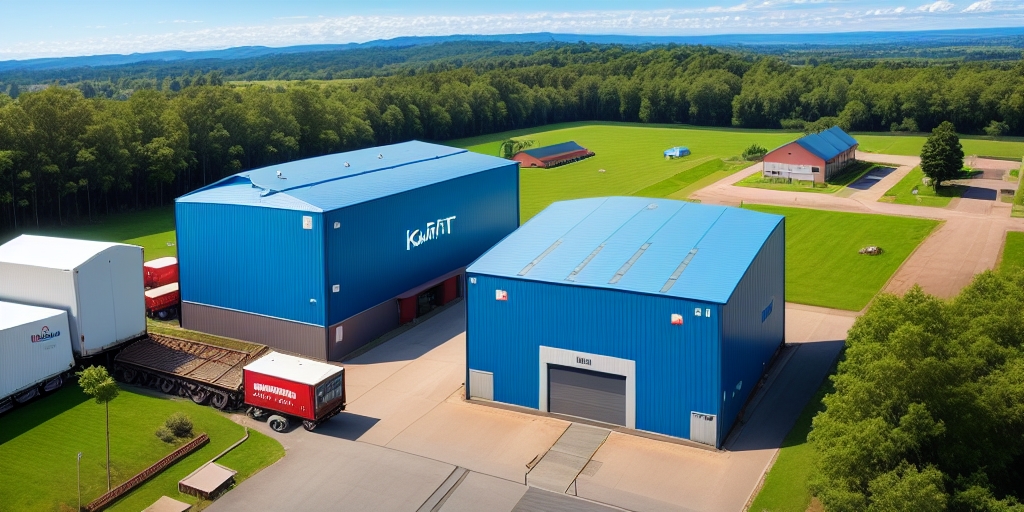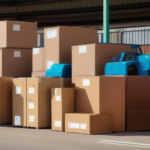Smurfit Kappa vs WestRock: A Comprehensive Comparison
In the competitive landscape of the paper and packaging industry, Smurfit Kappa and WestRock emerge as two dominant players. Both companies boast extensive histories, diverse product offerings, and a significant global footprint. This article delves into a detailed comparison of Smurfit Kappa and WestRock, analyzing their financial performance, product portfolios, manufacturing capabilities, market reach, sustainability practices, corporate social responsibility (CSR) initiatives, and future growth prospects.
Company History and Background
Smurfit Kappa
Smurfit Kappa was established in 1934 in Dublin, Ireland, originally as a small box-making enterprise. Over the decades, it has expanded into a leading provider of paper-based packaging solutions, operating in over 35 countries. As of 2022, Smurfit Kappa employs more than 46,000 individuals and reported net sales of €12.3 billion.
WestRock
WestRock was formed in 2015 through the merger of RockTenn and MeadWestvaco, making it a relatively newer entity in the industry. It quickly ascended to become one of the largest paper and packaging companies worldwide, with operations spanning North America, South America, Europe, and Asia. In 2022, WestRock employed over 50,000 people and achieved net sales of $21.5 billion.
Commitment to Sustainability
Both Smurfit Kappa and WestRock prioritize sustainability. Smurfit Kappa has set an ambitious goal to reduce its CO2 emissions by 30% by 2030, while WestRock aims to utilize 100% renewable energy across its operations by the same year. Their investments in recyclable and biodegradable packaging solutions underscore their commitment to environmental stewardship and the promotion of a circular economy.
Financial Performance
An analysis of the financial metrics reveals the resilience and strength of both companies amidst market challenges:
- Net Sales: In 2022, Smurfit Kappa reported €12.3 billion, marking a 3% increase, whereas WestRock achieved $21.5 billion, a 5% growth.
- Operating Profit Margin: Smurfit Kappa maintained a margin of 13.5%, surpassing WestRock's 11.2%.
- Return on Equity (ROE): Smurfit Kappa stands at 18.2%, compared to WestRock's 16.4%.
- Debt-to-Equity Ratio: Smurfit Kappa has a more favorable ratio of 1.25, while WestRock is at 1.60.
- Dividend Yield: Investors receive 3.5% from Smurfit Kappa and 3.0% from WestRock.
Additionally, Smurfit Kappa's diversified product portfolio, encompassing various packaging solutions, provides it with a competitive advantage that contributes to its robust financial health.
For further financial insights, refer to the latest reports from U.S. Securities and Exchange Commission and Reuters.
Product Portfolio
Smurfit Kappa
Smurfit Kappa offers a wide array of paper-based packaging solutions catering to industries such as consumer goods, e-commerce, and healthcare. Their product range includes corrugated boxes, containers, bags, and displays. Notably, the Supreme Kraftliner exemplifies their innovation, combining high strength with low weight to enhance sustainability.
WestRock
WestRock provides an extensive selection of packaging solutions, including folding cartons, corrugated containers, and beverage packaging. The company is a significant player in the beverage packaging sector and continually invests in sustainable packaging innovations to meet market demands.
Both companies are dedicated to sustainability, with Smurfit Kappa targeting a 30% reduction in CO2 emissions by 2030 and WestRock aiming for a 20% reduction in greenhouse gas emissions by 2025. Their focus on recyclable and biodegradable materials supports their environmental goals.
Manufacturing Capabilities
Both Smurfit Kappa and WestRock possess robust manufacturing infrastructures:
- Smurfit Kappa: Operates 356 production sites globally, producing approximately 36 million tons of paper annually. Their vertically integrated supply chain ensures quality and efficiency.
- WestRock: Manages 291 production facilities and 63 paper mills, with an annual capacity of 20 million tons of paper and 31 billion square feet of corrugated boxes.
Smurfit Kappa's extensive distribution network across 35 countries enhances its global reach, while WestRock maintains a strong presence in 20 countries, particularly in North America and Europe. Both companies implement sustainable forestry practices and prioritize the reduction of their environmental impact through innovative manufacturing processes.
Market Reach and Global Presence
Smurfit Kappa operates extensively in North America, Europe, Latin America, and Asia, holding a leading position in the European market. It serves a diverse range of industries, including e-commerce and healthcare.
WestRock has a substantial presence in North America, Europe, Asia, and South America, with a dominant foothold in the North American market. It caters to sectors such as food and beverage, personal care, and healthcare.
The strategic acquisitions and geographic expansions undertaken by both companies have fortified their market positions, enabling them to leverage strengths in key regions. For detailed market analyses, refer to reports from McKinsey & Company and Bain & Company.
Sustainability Practices
Sustainability remains a cornerstone of both Smurfit Kappa and WestRock's operational strategies:
- Smurfit Kappa: Aims to reduce CO2 emissions by 30% by 2030 and has launched the Better Planet Packaging initiative to enhance sustainable packaging solutions.
- WestRock: Committed to sustainable forestry management with triple certification from the Forest Stewardship Council, Programme for the Endorsement of Forest Certification, and Sustainable Forestry Initiative. The company focuses on eco-friendly packaging alternatives to minimize its environmental footprint.
Both companies invest in renewable energy sources and adopt responsible sourcing of raw materials, reinforcing their dedication to environmental sustainability.
Corporate Social Responsibility (CSR) Initiatives
Smurfit Kappa
Smurfit Kappa actively engages in CSR initiatives that support local communities, promote diversity and inclusion, and reduce waste. The company has successfully reduced waste sent to landfills by 90% and decreased water consumption by 30%, demonstrating its commitment to sustainable practices.
WestRock
WestRock operates the WestRock Foundation, which focuses on education, environmental sustainability, and health and wellness initiatives. The company also implements sustainability practices aimed at reducing energy consumption, water usage, and greenhouse gas emissions.
These CSR efforts highlight both companies' dedication to social responsibility and sustainable business operations.
Competitive Landscape
In addition to Smurfit Kappa and WestRock, the paper and packaging industry features other significant competitors:
- International Paper: The world's largest paper and packaging company, offering a broad product portfolio and operating in over 20 countries.
- DS Smith: A UK-based company specializing in corrugated packaging solutions, with a presence in more than 30 countries and experiencing rapid growth.
Smurfit Kappa and WestRock maintain their competitive edge through innovation, strategic acquisitions, and a strong focus on sustainability, enabling them to thrive in a crowded marketplace.
Future Growth Potential
The global paper and packaging industry is poised for growth, driven by increasing demand from sectors like e-commerce and healthcare. Both Smurfit Kappa and WestRock are well-positioned to capitalize on these trends:
- Smurfit Kappa: Its innovative product portfolio and extensive global reach make it a strong contender for continued growth.
- WestRock: With a focus on sustainable packaging and a robust presence in key markets, WestRock is set to leverage emerging industry trends effectively.
Industry forecasts from sources such as Fortune Business Insights and Grand View Research predict sustained growth in the packaging sector, offering ample opportunities for both companies.
Investor Perspectives
From an investment standpoint, both companies have demonstrated strong performance:
- Stock Performance: Over the past five years, Smurfit Kappa's stock price has surged by approximately 110%, while WestRock has seen a 90% increase.
- Market Capitalization: WestRock boasts a larger market cap of $16.2 billion compared to Smurfit Kappa's €9.1 billion, indicating higher investor confidence in WestRock's growth prospects.
Investors may consider factors such as market position, financial stability, and growth potential when evaluating these companies. For detailed financial analyses, refer to Investopedia and MarketWatch.
Customer Satisfaction
Both Smurfit Kappa and WestRock are recognized for delivering high-quality packaging solutions:
- Smurfit Kappa: Serves a broad range of industries, including e-commerce and healthcare, and has been honored with several European Carton Excellence Awards.
- WestRock: Holds a significant presence in the food and beverage industry and has received accolades such as the National Association of Container Distributors Packaging Awards.
Customer feedback reflects high satisfaction levels, with both companies consistently meeting industry standards and client expectations.
Employee Satisfaction and Workplace Culture
Smurfit Kappa and WestRock prioritize their employees through comprehensive training, development opportunities, and robust wellness programs:
- Both companies offer health insurance, retirement benefits, and mental health support.
- Employee satisfaction ratings on platforms like Glassdoor average around 3.5 out of 5 for both companies.
- Smurfit Kappa enjoys a higher employee recommendation rate of 70%, compared to WestRock's 60%.
These metrics indicate a positive workplace environment, though there is always room for improvement to further enhance employee engagement and satisfaction.
Conclusion: Smurfit Kappa vs WestRock
Both Smurfit Kappa and WestRock are formidable entities in the paper and packaging industry, each with its unique strengths. Smurfit Kappa excels in product innovation and boasts a broader geographical reach, offering a diverse range of packaging solutions. WestRock, with its larger market capitalization and strong presence in North America, demonstrates robust financial performance and a commitment to sustainability.
The choice between the two ultimately depends on specific business priorities, market focus, and strategic goals. Regardless, both companies are well-positioned to leverage future growth opportunities and continue their leadership in the evolving packaging landscape.




















